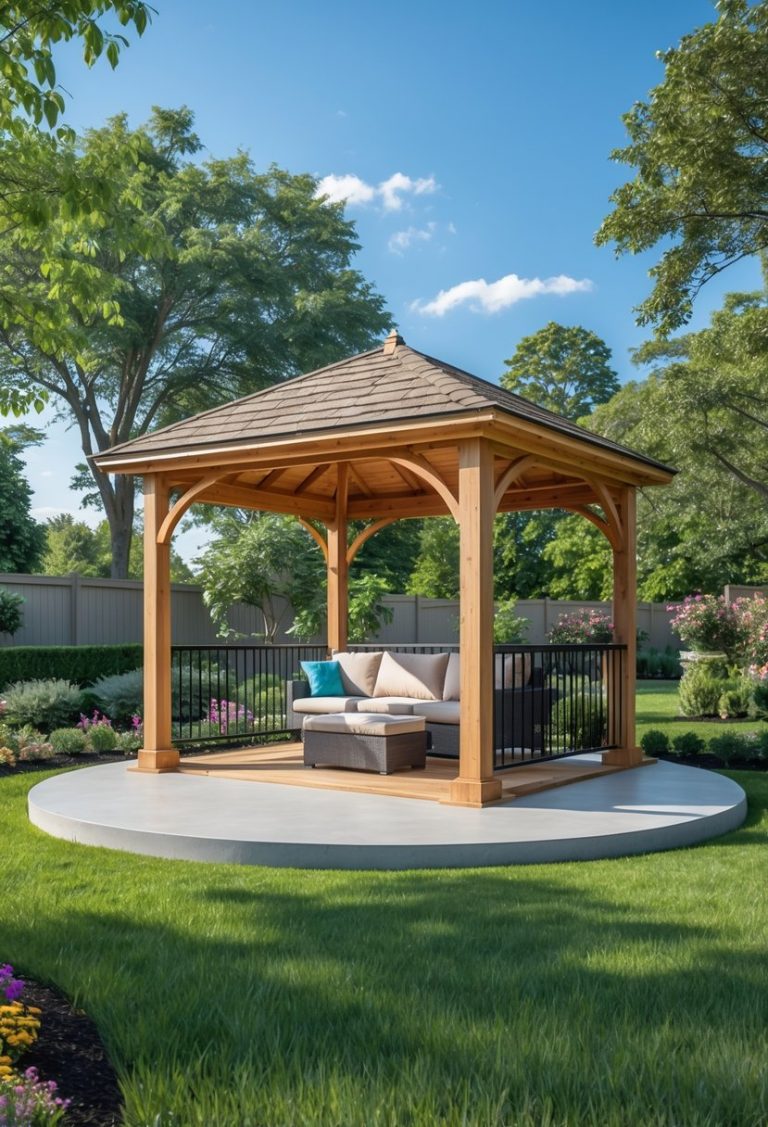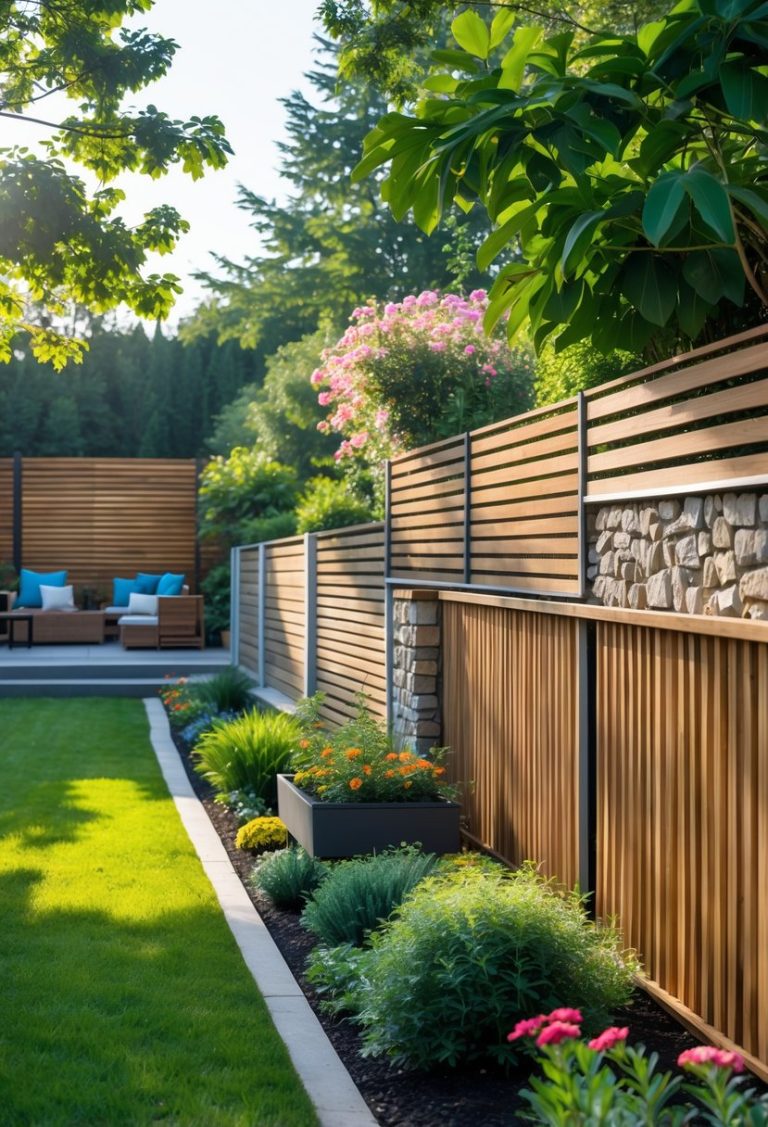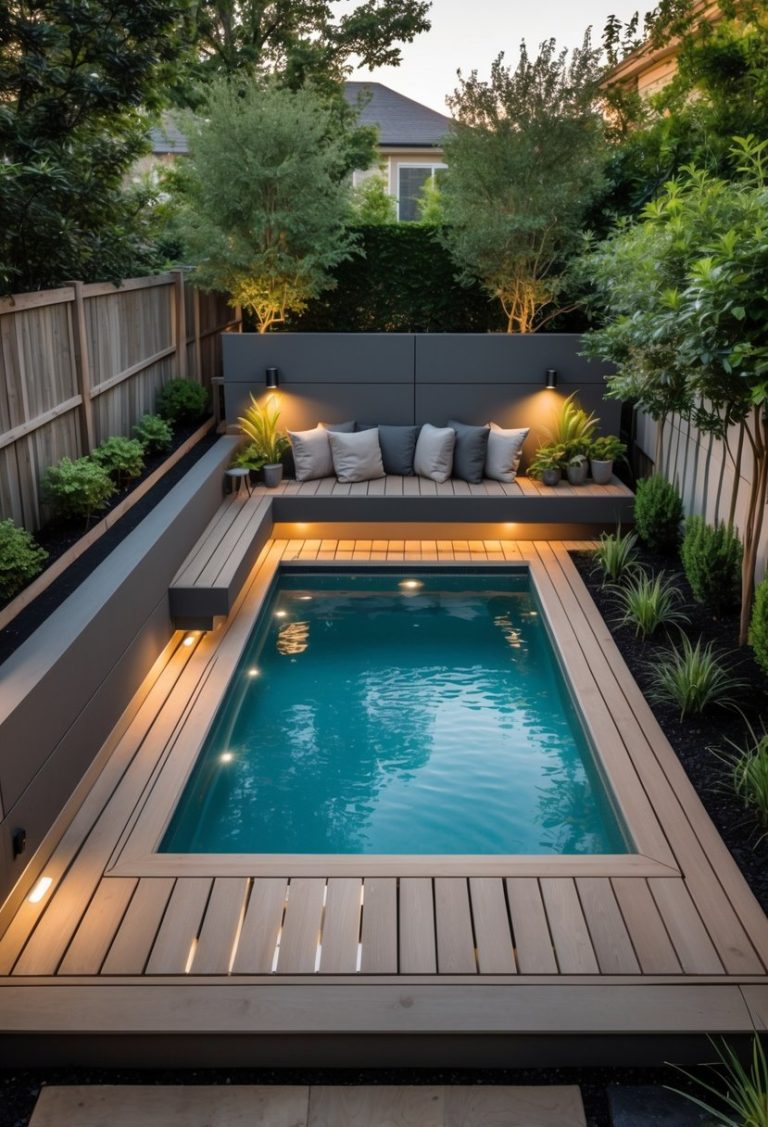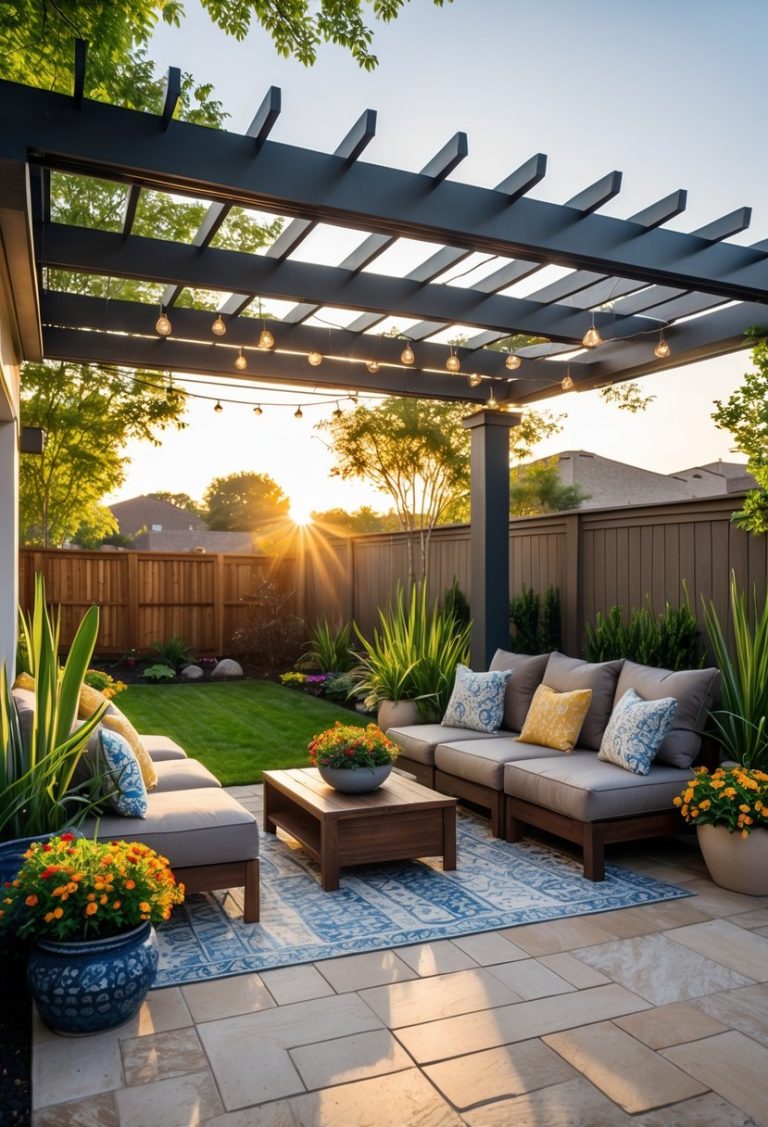Hot Tub Ideas Backyard 10 Stylish Designs to Enhance Your Outdoor Space
Creating a backyard with a hot tub can enhance outdoor living by offering a space for relaxation and socializing. Many homeowners look to design ideas that fit their style, budget, and available space while making their backyard feel inviting and comfortable.
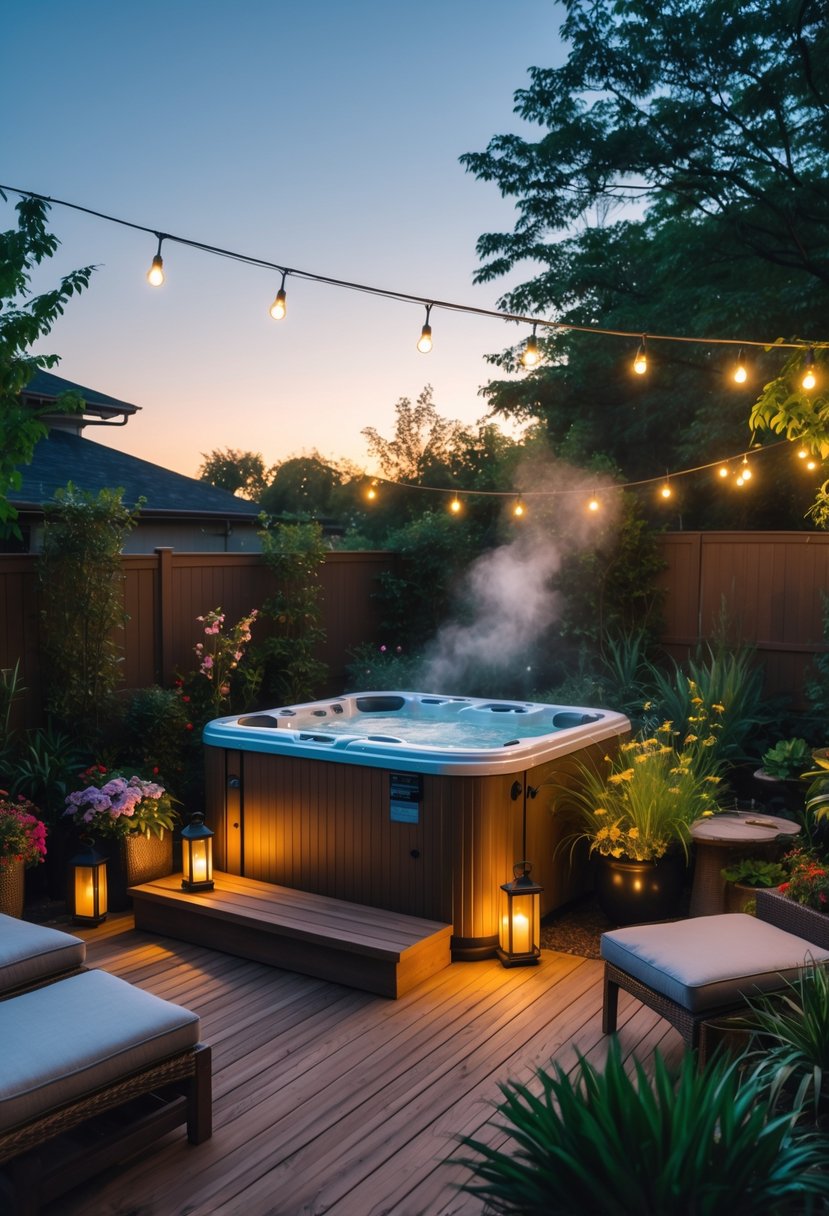
The key to successful hot tub ideas for a backyard is blending functionality with aesthetics to create a relaxing retreat tailored to personal preferences. Thoughtful planning helps make the hot tub area both practical and enjoyable without overwhelming the rest of the outdoor space.
1) In-ground hot tub with integrated stone patio
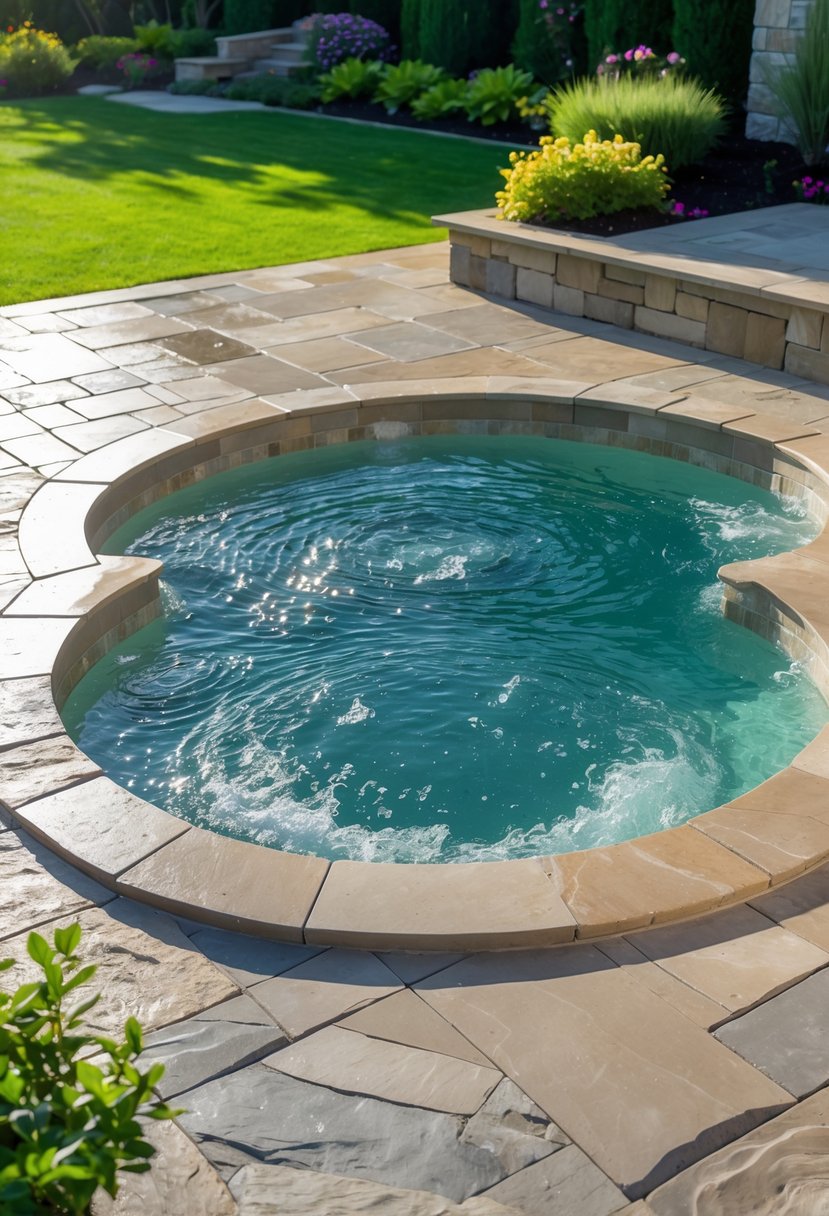
An in-ground hot tub built into a stone patio creates a smooth, unified look. The stone material adds durability and a natural feel to the backyard space.
This design often includes a fireplace or seating area nearby for added comfort. It fits well in yards where a clean, low-profile style is preferred.
2) Above-ground hot tub with wooden deck surround
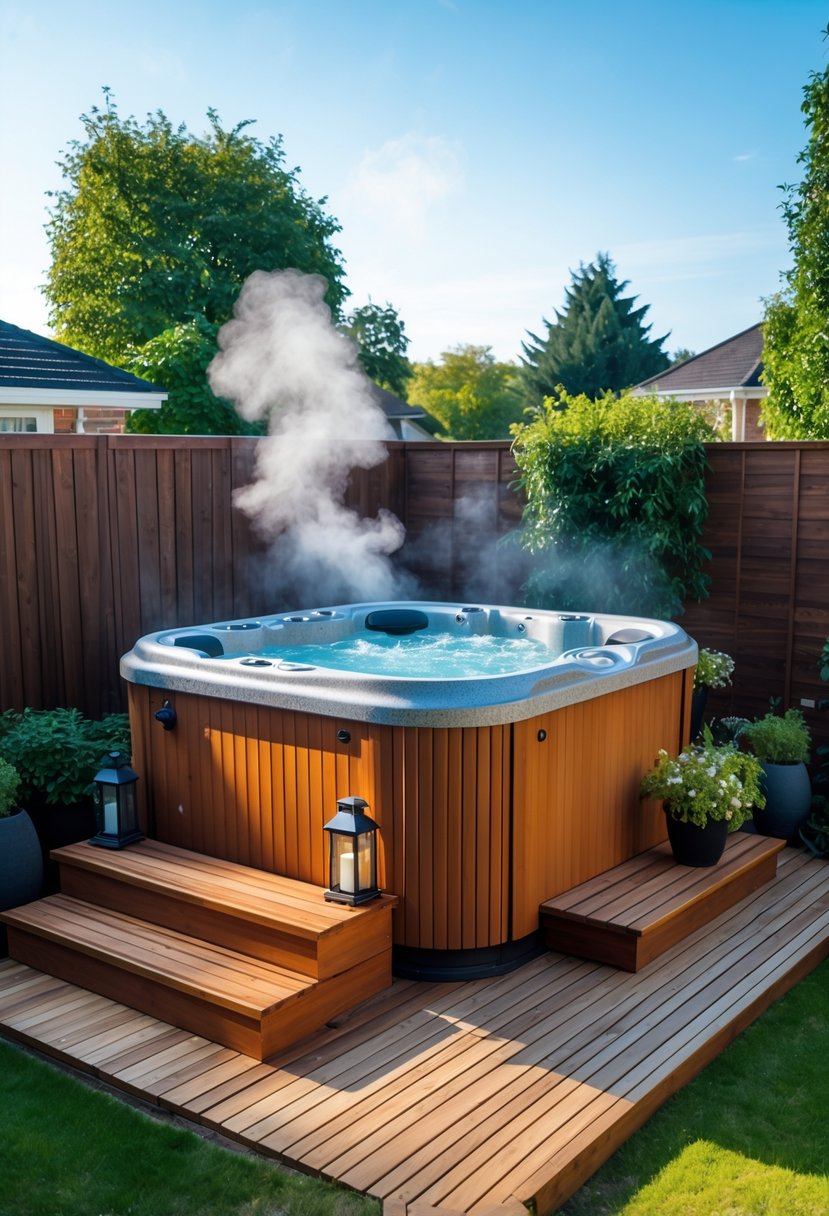
An above-ground hot tub with a wooden deck surround creates a clean, natural look. Wood offers durability and warmth, making the space inviting.
The deck can include steps for easy access and seating areas for relaxation. This design suits many backyard sizes and styles while adding function.
3) Secluded forest retreat hot tub setup
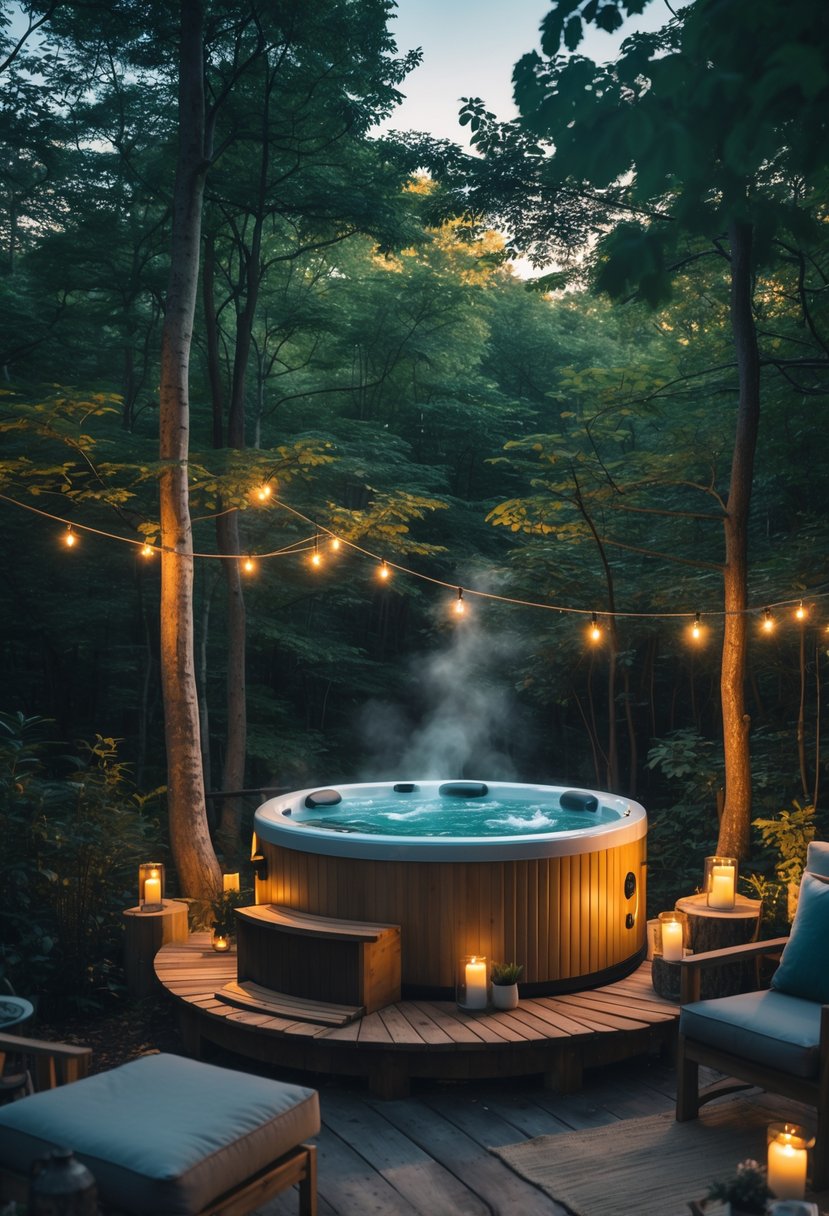
A hot tub placed among tall trees creates a private, quiet space. Stone or wood decking matches the natural surroundings well. Adding a fire pit nearby enhances warmth and comfort. This setup offers a simple way to enjoy nature while relaxing in the hot tub.
4) Hot tub with built-in bench seating
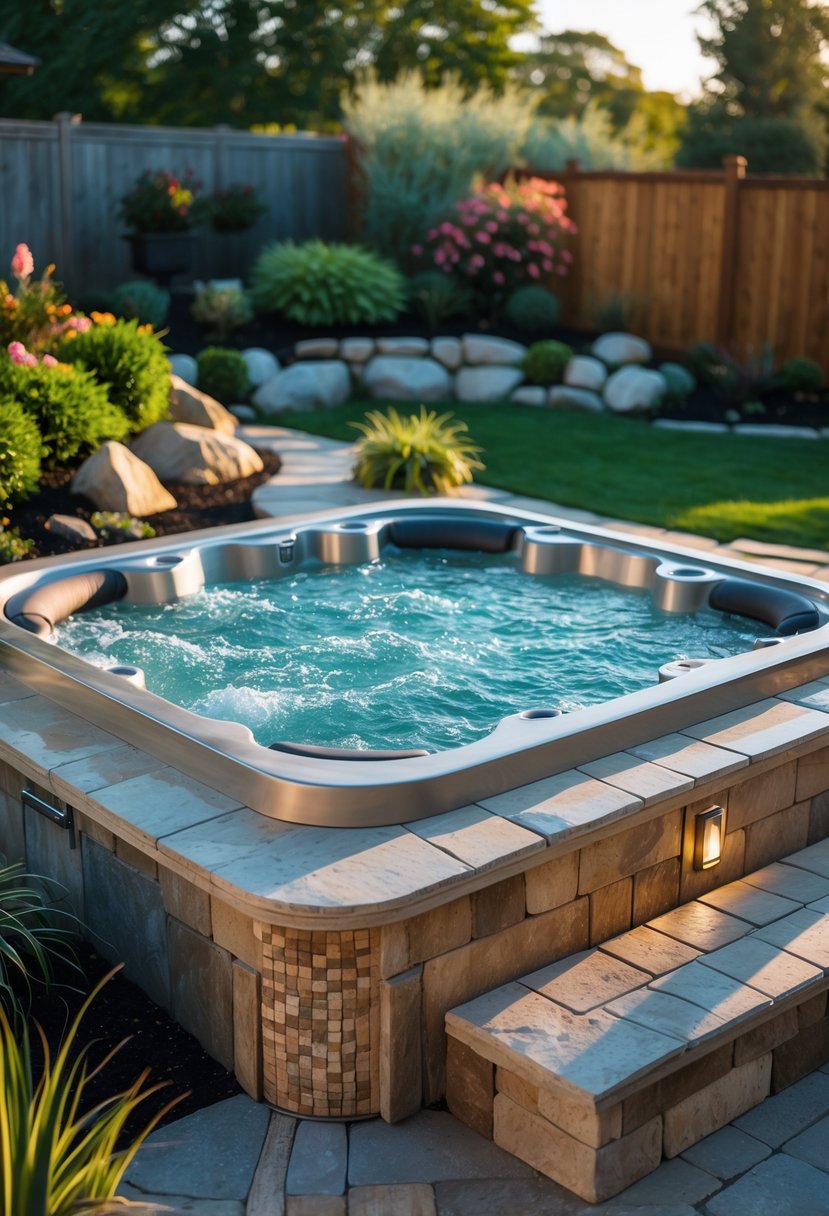
Built-in bench seating adds comfort and convenience around the hot tub. It provides extra space for sitting or placing towels and drinks.
This seating can be made from wood, composite, or stone to match the backyard style. It helps define the hot tub area and can improve accessibility.
5) Hot tub area with privacy screens and greenery
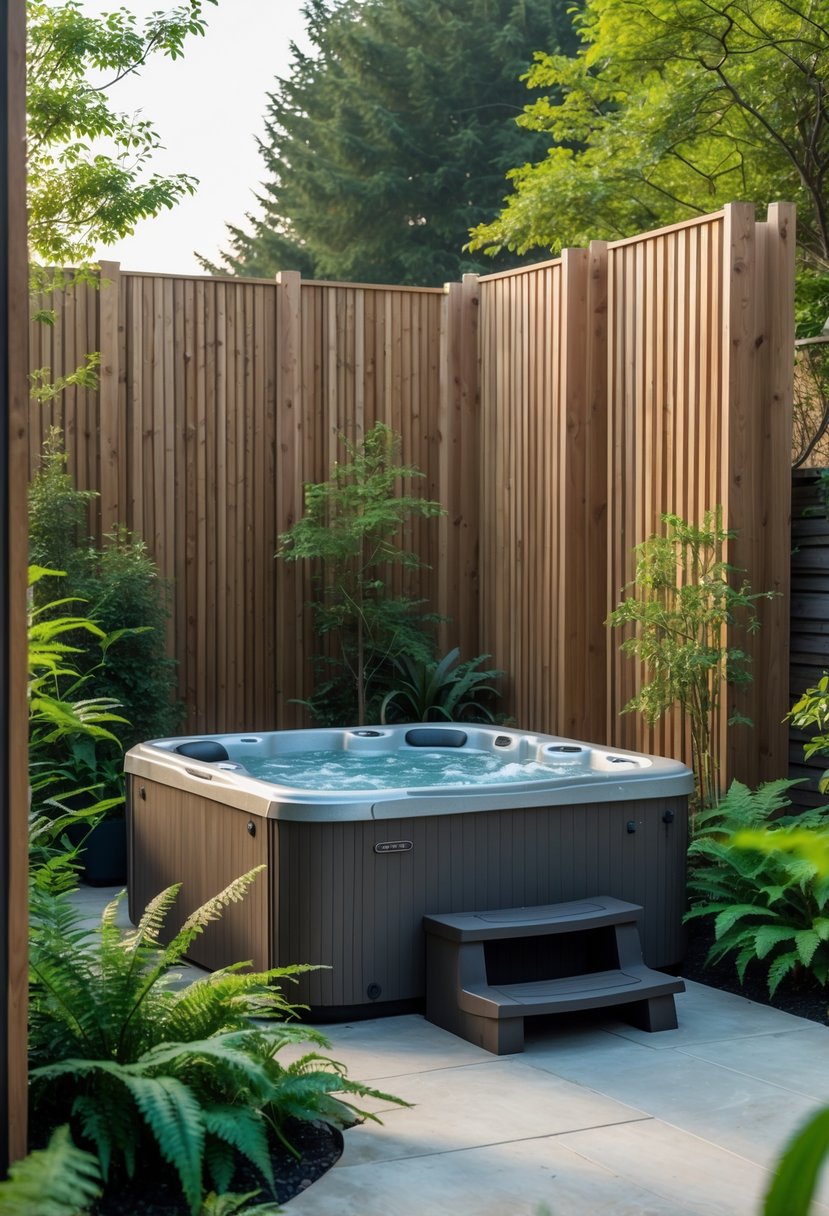
Privacy screens offer a simple way to block views around a hot tub. They can be made from wood, metal, or composite materials to match the backyard style.
Adding greenery like tall plants or hedges helps soften the space and increases seclusion. Combining screens with plants creates an inviting and private hot tub area.
6) Hot tub next to a fire pit with loungers
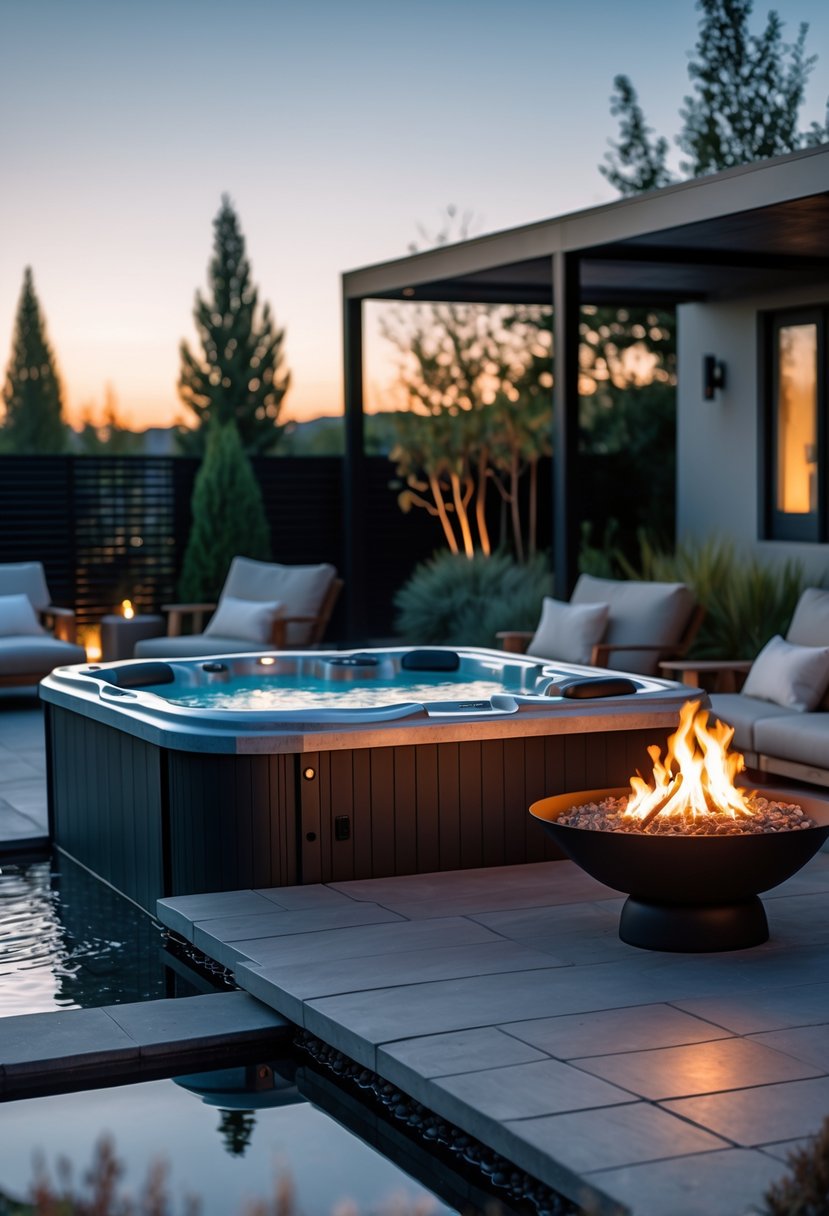
Placing a hot tub next to a fire pit creates a cozy and inviting backyard space. Loungers nearby add comfort and a place to relax after soaking in the tub.
This setup works well for both warm and cool evenings. The fire pit provides warmth while the hot tub offers a soothing soak, making outdoor time enjoyable year-round.
7) Hot tub under a pergola with climbing plants

A hot tub placed under a pergola creates a defined, cozy space in the backyard. Climbing plants growing on the pergola add natural shade and improve privacy.
These plants soften the structure’s look and help blend the hot tub area with the garden. This setup offers both style and some protection from sun while allowing fresh air.
8) Hot tub with decorative rock landscaping
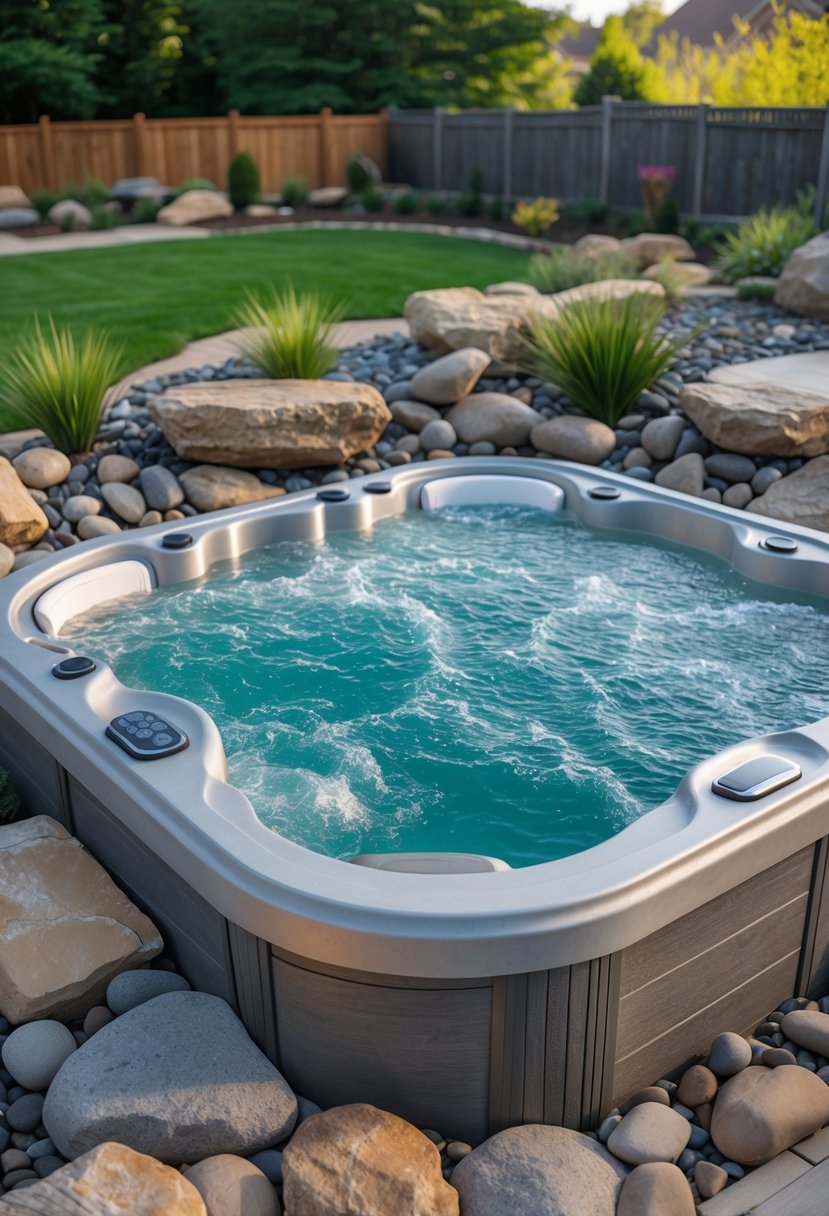
A hot tub surrounded by decorative rocks creates a natural and calm atmosphere. The rocks add texture and help the hot tub blend into the backyard.
Adding different sizes and colors of rocks can enhance visual interest. This style works well with plants or small water features nearby. It offers a simple, low-maintenance way to improve the space around the tub.
9) Modern hot tub embedded in stamped concrete patio
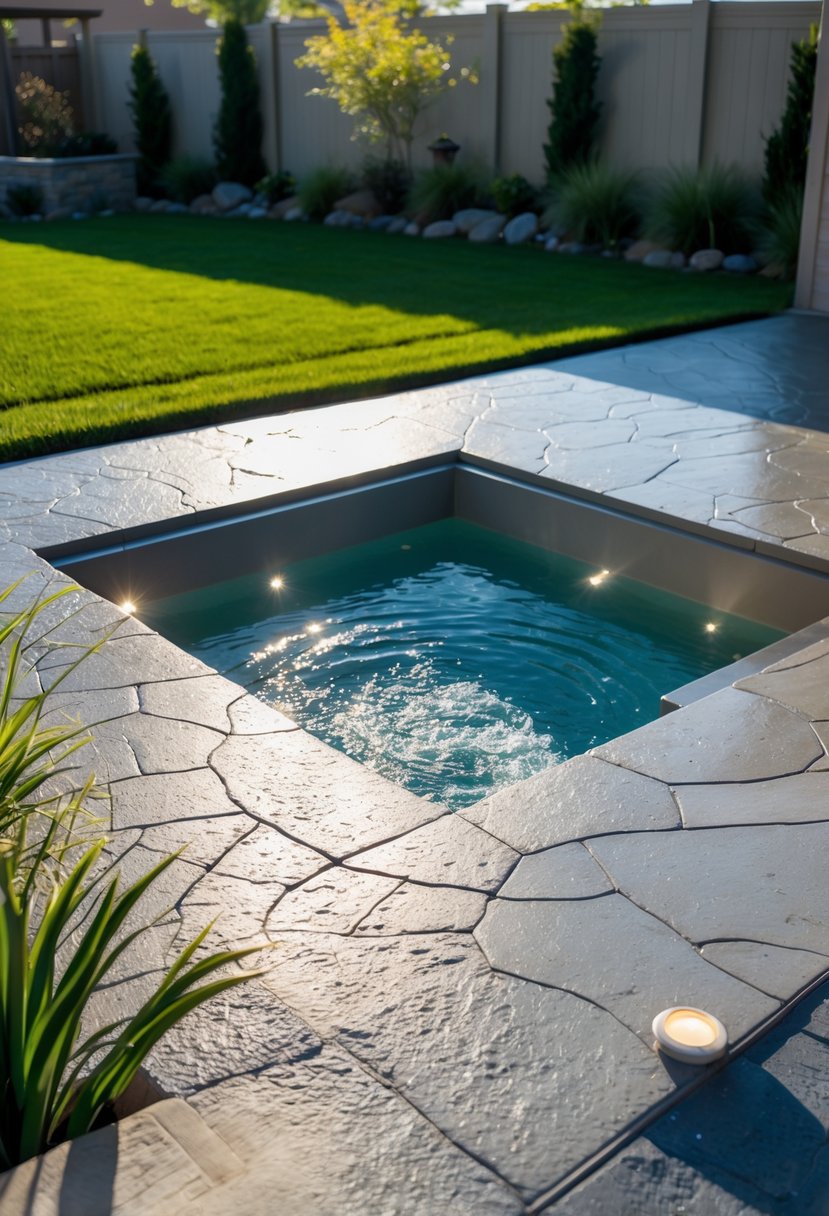
A modern hot tub embedded in a stamped concrete patio creates a sleek, unified look. The stamped pattern adds texture and style while matching the surrounding outdoor space. This design keeps everything flush and easy to move around. It also makes cleaning and maintenance simpler, as there are no edges or gaps between the tub and patio.
10) Hot tub area accented by backyard water fountain
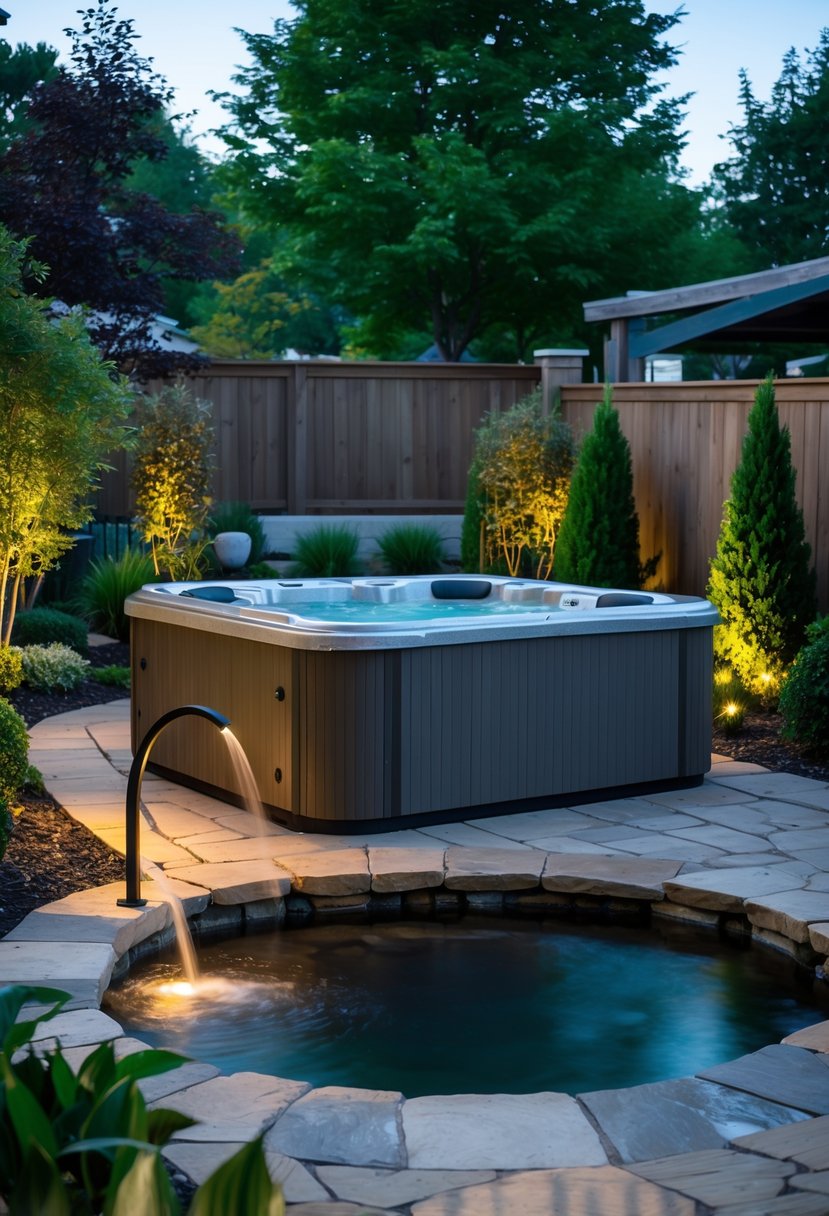
A backyard water fountain near a hot tub adds a calming sound that enhances relaxation. The gentle flow of water creates a peaceful atmosphere without being loud or distracting.
It also adds visual interest, making the hot tub area more inviting. Simple fountains or small waterfalls can be chosen to fit any backyard size and style.
Backyard Hot Tub Placement Essentials

Choosing the right spot for a hot tub involves balancing comfort, convenience, and safety. Factors like location, privacy, shelter, and access to utilities play a big role.
Optimal Location Strategies
The hot tub should be placed in a flat, stable area to support its weight when full. Avoid uneven ground or slopes to prevent damage or tipping risks.
Positioning the hot tub close to the house is often best for easier access, especially during cold or rainy weather. It also lets users quickly move between the house and tub.
Sunlight exposure matters too. A sunny spot heats the area naturally, but some shade can help keep the water cool on hot days. Consider planting trees or installing shades based on climate.
Privacy and Shelter Considerations
Privacy is important for comfort. Placing the hot tub behind fences, hedges, or in corners can block neighbors’ views. Structures like pergolas or gazebos can add extra privacy.
Shelter protects the hot tub and users from rain, snow, and wind. Overhead covers prevent debris from falling in and reduce maintenance. Covered areas keep the tub warmer and more inviting.
Lighting around the hot tub should also be planned. Soft, weatherproof lights improve safety without disturbing the atmosphere.
Proximity to Utilities and Access
The hot tub must be near electrical and water sources to function properly. Electrical outlets should meet safety codes and be placed where water won’t reach them.
Easy access for maintenance and refilling the tub is essential. Avoid tight spaces or hard-to-reach areas that make cleaning and servicing difficult.
Consider pathways that lead directly to the hot tub. Non-slip materials ensure safety when walking to and from the tub, especially when wet.
Design Integration for Backyard Hot Tubs
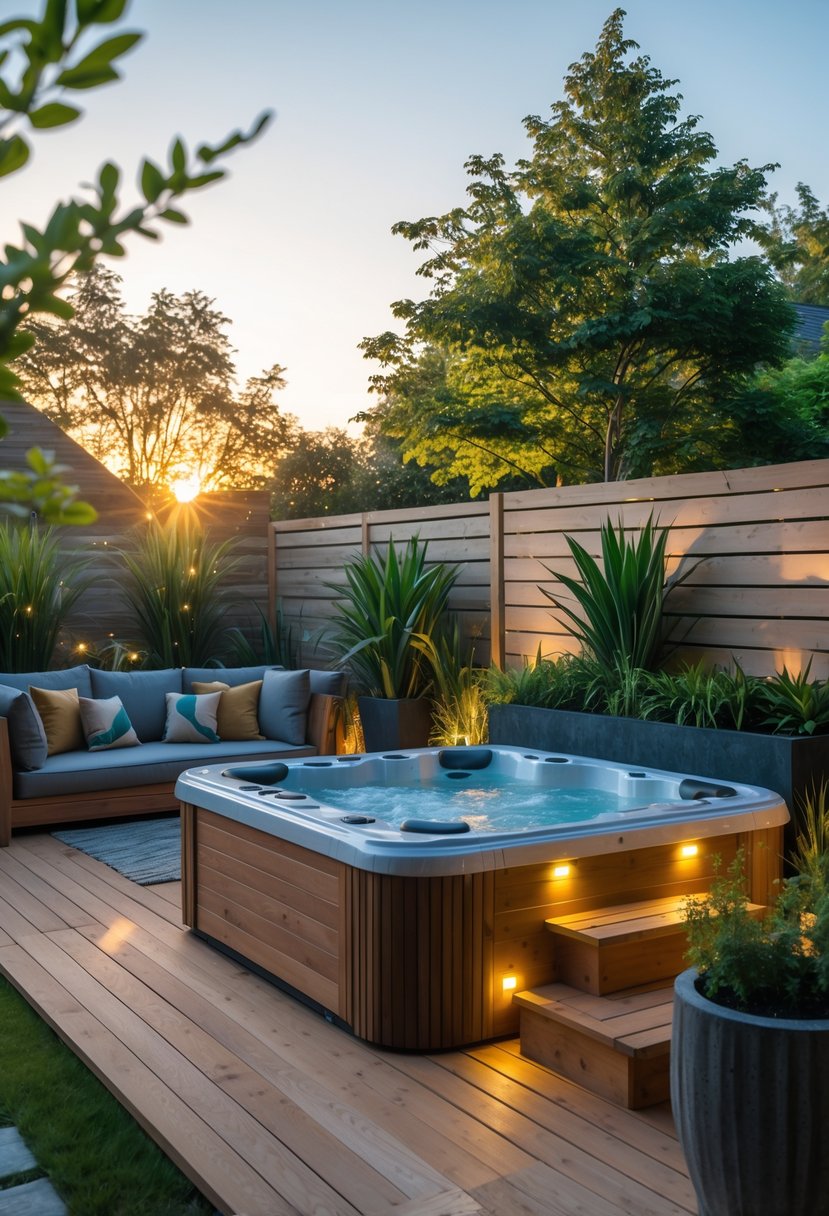
A well-designed backyard hot tub fits naturally into the outdoor space by combining elements of nature and existing home features. Thoughtful placement and design choices help the hot tub feel like part of the yard, improving both function and appearance.
Incorporating Landscaping Features
Landscaping can enhance the hot tub area by adding privacy and natural beauty. Using plants such as tall grasses or shrubs helps block views from neighbors without closing off the space. Rocks and mulch around the tub create a clean border and reduce mud or grass getting into the water.
Pathways made of stone, wood, or pavers guide users safely to the hot tub and add style. Some may add lighting in the plants or along the path to improve visibility at night. Adding seating such as benches or small decks near the tub extends the usability and comfort of the area.
Blending with Existing Architecture
Matching the hot tub’s design to the home’s style creates a sense of unity outdoors. For example, a wooden hot tub deck can echo the wood tones of the house’s siding or patio furniture. Materials like stone or tile used in the yard can also be extended around the hot tub area.
The shape of the hot tub can reflect architectural angles or curves of the home. Built-in designs often work well because they integrate the tub flush with the patio or deck, making the hot tub less of an afterthought. Coordinating colors and finishes strengthens this effect and maintains a cohesive look.

